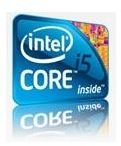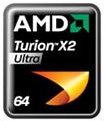AMD Turion vs. Intel Core: Which is Better?
The Intel Core Family of Chips
Intel Core is the name for a line of diverse mid-range to high-end consumer and business microprocessors. The Core family of processors come in three stages. The less powerful entry-level microprocessors are marketed as the Celeron and Pentium for the lower end PC market. The more effective and powerful versions of Core processors, on the other hand, are marketed as Xeon processors for distribution to the server market. There is a lineup of Core processors which includes the Core i7, Core i5 and Core i3, and the older Core 2 Solo, Core 2 Duo, Core 2 Quad, and Core 2 Extreme lines.
AMD Turion
AMD Turion 64 X2 dual-core technology is designed for mobility and better multi-tasking performance in thinner and lighter notebook designs. It also has simultaneous 32- and 64-bit performance chips designed to be compatible with the 64-bit Windows 7 operating system.
It has an energy management technology, which delivers performance on demand and this can extend the system battery life by up to 65%. It also is compatible with 802.11a, b, g, and Bluetooth wireless solutions. The AMD Turion 64 X2 technology gives mobile PC users an integrated Wi-Fi certified WLAN technology. This allows users to keep in touch. Anywhere mobile users go they can stay connected.
Intel Core vs AMD Turion X2
The Turion 64 and Turion 64 X2/Ultra processors are designed to compete with Intel’s mobile processors the Intel Core and Core 2 processors. The Turion is a bit older and designed for improving energy efficiency in a laptop or notebooks. The Core 2 is designed for the laptop.
Energy Consumption
The Turion X2 Ultra processor can implement three different voltage planes: one for the northbridge and one for each core. When combined with the multiple phase-locked loops (PLL), this allows one core to alter its voltage and operating frequency independently of the operations of the other core or the northbridge. This allows the processor to switch to one of 8 frequency levels and one of 5 voltage levels. This frequency and voltage adjustment lets the processor underclock to as little as 250Mhz during idle in order to save power.
The Core microarchitecture has efficient decoding stages, execution units, caches, and buses. This reduces the power consumption of Core 2 CPUs but increases their processing capacity.
Architecture
AMD Turion X2 has a Socket S1 and DDR2 memory. They also include AMD Virtualization Technology. This takes some tasks that virtual machine managers perform in software, and through emulation, then simplifies them. The Ultra CPUs have 2x 1024 KB L2 cache instead of 2x 512KB of the former models.But compared to the 6MB of L2 cache in the Core 2 Duo top models, AMD lags behind. Clock rates range from 2.0 GHz to 2.4 GHz,
The Core 2 brand was introduced on July 2006, and comprises four types of processors. These are the Solo single-core CPU, the Duo dual-core chips, and the Quad quad-core chips. In 2007, Intel released the Core Extreme which were dual- or quad-core CPUs. For the business market, Intel Core 2 processors with vPro technology was added. It included the dual-core and quad-core chip. The Core 2 has a CPU clock rate range of 1.06 GHz to 3.33 GHz with a Front Side Bus speed from 533 MHz to 1600 MHz .

Summary
The Intel processor offers better performance for servers. The AMD Turion offers better performance for mobile computers like laptops. The Intel Core is more expensive because it has more advanced technology that is used for processing like gaming and server operations. However, the AMD Turion is designed for mobile computers, with good energy management technologies for the type of operations that would run on a laptop.
Source:
